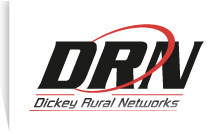 When broadband advocates talk about the advantages of fiber-to-the-home service, commercial providers and their friends routinely criticize us for demanding “Cadillac” networks in areas that “don’t need” fiber-fast broadband speeds. Despite the fact the United States and Canada continue to fall further and further behind in the global broadband speed race, companies that answer to stockholders simply won’t hear of upgrading networks to the technology Asia and Europe increasingly takes for granted.
When broadband advocates talk about the advantages of fiber-to-the-home service, commercial providers and their friends routinely criticize us for demanding “Cadillac” networks in areas that “don’t need” fiber-fast broadband speeds. Despite the fact the United States and Canada continue to fall further and further behind in the global broadband speed race, companies that answer to stockholders simply won’t hear of upgrading networks to the technology Asia and Europe increasingly takes for granted.
There is no question fiber broadband is costly to build, especially in rural communities where the cost per home will require a long-term payback for the upfront investment required. But that doesn’t stop community-owned networks and public co-ops from advancing forward.
Dakota Central Telecommunications and Dickey Rural Networks last month celebrated the completion of the largest fiber-to-the-home network in North America… in rural North Dakota.
 Both providers, operated as co-ops, deliver speedy service to every home and business within a 10,000 square mile area. Broadband at speeds of 20Mbps starts at $39.95 a month. Want faster speeds? For $89.95 a month, you can purchase 50Mbps service. A triple-play package of phone, broadband, and cable TV service runs $113.75 a month.
Both providers, operated as co-ops, deliver speedy service to every home and business within a 10,000 square mile area. Broadband at speeds of 20Mbps starts at $39.95 a month. Want faster speeds? For $89.95 a month, you can purchase 50Mbps service. A triple-play package of phone, broadband, and cable TV service runs $113.75 a month.
While DSL has been available in the past, it simply could not deliver the 21st century broadband speeds businesses and consumers need.
Both providers, collectively owned by the members who subscribe to the service, spent a combined $90 million on the expansive fiber network. But instead of throwing a hissyfit over the price tag, the collective feeling was this represents an investment in North Dakota’s future. Area businesses have already taken advantage of the new speeds to improve efficiency and think about new ways they can market their products and services online.
The decision to deploy fiber to the home service made sense because of its infinite expandability, dependability, and capacity. Commercial providers like AT&T and Verizon that embarked on fiber upgrades deploy them only in the largest cities, where the cost per subscriber is lower and where investors believe the costs to build the networks will be recouped the fastest. Now both companies have declared those networks to be largely complete, leaving large numbers of their customers off the upgrade list, stuck indefinitely with yesterday’s DSL technology.
That isn’t happening with community-owned providers and co-ops, where the goal remains to reach every possible customer. Rapid cost recovery is not the highest priority — delivering good service in their communities is. Most are willing to wait a little longer to pay off network construction costs in return for better service for everyone today.
USDA Under Secretary Dallas Tonsager says North Dakota’s fiber network is a “great role model” for the rest of the country.
“We’re going to use you as an example over and over and over again,” he said.
The USDA administers grants for rural broadband networks to help expand broadband service in underserved/unserved rural areas.
[flv width=”475″ height=”288″]http://www.phillipdampier.com/video/WDAY Fargo South central North Dakota touts largest fiber optic broadband network in the nation 4-11-12.flv[/flv]
WDAY in Fargo traveled to the unveiling of North America’s largest fiber broadband network and talked with residents about the transformational nature of fiber broadband. (2 minutes)
[flv width=”640″ height=”380″]http://www.phillipdampier.com/video/North Dakota Fiber 4-12.flv[/flv]
This video shows how south-central North Dakota managed to build a fiber network that reaches every home within a 10,000 square mile area and how it is changing lives. (7 minutes)


 Subscribe
Subscribe